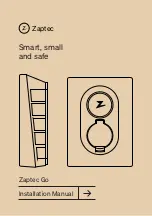
4. With the coolant surge tank pressure cap off, start
the engine and let it run until you can feel the upper
radiator hose getting hot. Watch out for the
engine cooling fan.
By this time, the coolant level inside the coolant
surge tank may be lower. If the level is lower, add
more of the proper mixture to the coolant surge tank
until the level reaches the FULL COLD mark.
5. Replace the pressure cap. Be sure the pressure
cap is hand-tight and fully seated.
6. Verify coolant level after engine is shut off and the
coolant is cold. If necessary, repeat coolant fill
procedure Steps 1 through 6.
Notice: If the pressure cap is not tightly installed,
coolant loss and possible engine damage may
occur. Be sure the cap is properly and tightly
secured.
Engine Overheating
The vehicle has several indicators to warn of engine
overheating.
There is a coolant temperature gage on your vehicle’s
instrument panel. See Engine Coolant Temperature
Gage on page 3-38.
In addition, ENGINE OVERHEATED STOP ENGINE,
ENGINE OVERHEATED IDLE ENGINE, and a ENGINE
POWER IS REDUCED message comes on in the
Driver Information Center (DIC) on the instrument panel.
See DIC Warnings and Messages on page 3-58.
5-30
Summary of Contents for 2009 Avalanche
Page 6: ... NOTES vi ...
Page 23: ...Put someone on it Get it up to speed Then stop the vehicle The rider does not stop 1 17 ...
Page 86: ... NOTES 1 80 ...
Page 183: ... NOTES 3 3 ...
Page 184: ...Instrument Panel Overview 3 4 ...
Page 380: ... NOTES 4 68 ...
Page 498: ... NOTES 5 118 ...
Page 514: ...Engine Drive Belt Routing 6 16 ...
















































